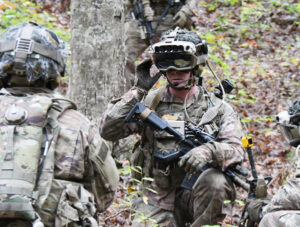House appropriators are looking to boost research and development (R&D) funds for the teams leading the Army’s six modernization priorities, while also once again proposing a more than $200 million cut to the service’s future augmented reality headset program.
A report accompanying the House Appropriations Defense Subcommittee’s (HAC-D) $706 billion fiscal year 2022 spending bill, released on Monday a day ahead of the full committee’s markup, details plans to add more than $330 million to the Army’s Cross Functional Teams (CFTs) managing efforts to develop new long-range fires, combat vehicles and more.

The R&D plus-up, which includes increases of $123.6 million for applied research and $207.3 million for advanced technology development across the six CFTs, follows the Army’s plan to reduce its total RDT&E account by $1.3 billion in its FY ‘22 budget request.
While the Army has noted that its full range of more than 30 signature modernization programs received full funding in its $173 billion budget request, lawmakers in recent weeks have expressed concerns over the service’s decision to take a cut in its research and development account (Defense Daily, May 28).
House appropriators included a $77.3 million R&D increase for the Air and Missile Defense CFT to include program boosts for high energy laser technology advancements and precision long-range integrated strike, while the Long-Range Precision Fires CFT received a $45 million R&D plus-up to cover an increase for an “extended range and hybrid gun launched unmanned aerial systems” effort.
The Next-Generation Combat Vehicle CFT received the largest R&D increase, totaling $113 million above the budget request, with the bill report including a justification covering plus-ups for digital design and simulated testing, “highly electrified vehicles,” fuel cell technology and development of the Robotic Combat Vehicle-Light.
The Future Vertical Lift received a $36 million boost to cover Black Hawk rotor blade modernization and work on a “joint tactical aerial resupply vehicle,” while both the Soldier Lethality and Network CFT had increases above $35 million to cover respective projects for “small arms fire control advanced technology” and mesh network-enabled small satellites.
Lawmakers, however, have once again proposed a significant cut to the Army’s Integrated Visual Augmentation System program, citing the service’s request for FY ‘22 as “ahead of need.”
HAC-D’s bill includes $876.7 million for Army night vision devices, which is $215.6 million below the $1.1 billion included in the budget request.
The majority of that cut, $213.5 million, would come from reducing the IVAS program request, according to the bill report.
In late March, the Army awarded Microsoft [MSFT] a deal worth up to $21.9 billion over the next 10 years to move the IVAS program from rapid prototyping into production (Defense Daily, March 31).
Lawmakers have previously pressed the Army on its “aggressive fielding schedule” for IVAS headsets, with the FY ‘21 defense appropriations bill including a $235.6 million reduction to the program (Defense Daily, Dec. 22).